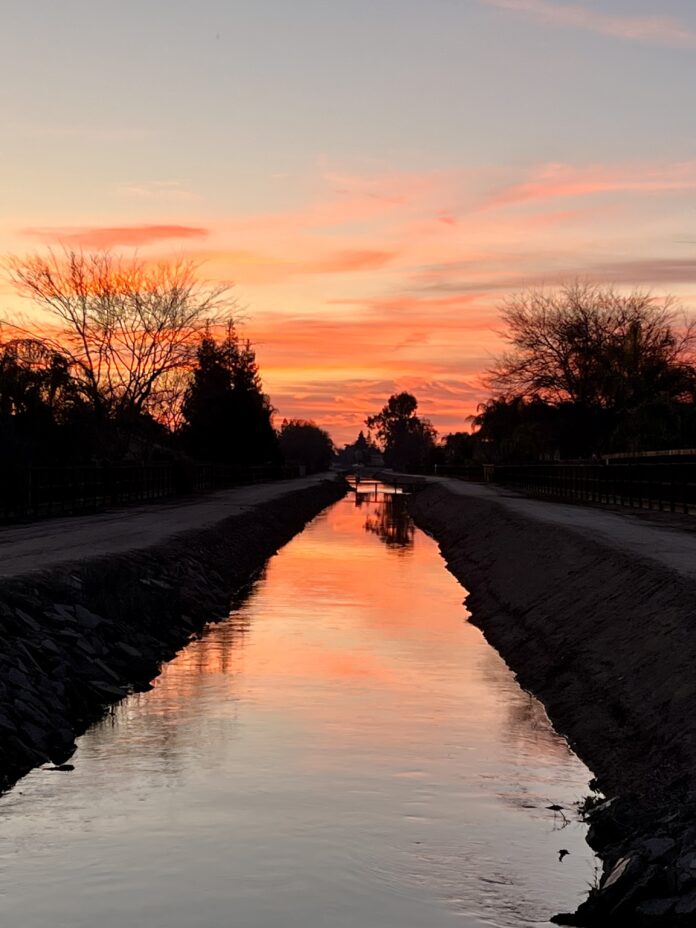On March 21, 2023 beginning at 11 a.m., the Madera County board of supervisors met as the Madera GSA board to hold a public hearing on a revised joint GSP that was to be submitted to DWR. Also to be considered was an amended Coordination Agreement among the seven GSAs in the Madera Subbasin and an MOU among them for establishing a domestic well mitigation program in the Madera Subbasin. The deadline for submission to DWR of a revised joint GSP was looming at 5 p.m. that very day, March 21.
domestic well mitigation program in the Madera Subbasin. The deadline for submission to DWR of a revised joint GSP was looming at 5 p.m. that very day, March 21.
Chairman David Rogers introduced Stephanie Anagnoson, director of the department of water and natural resources for the county. She in turn introduced county attorney Mike Linden and on Zoom, two key consultants, John Davids of Davids Engineering and Peter Leffler of Luhdorff & Scalmanini Consulting Engineers. These two firms had been assigned the technical work of revising the GSPs for DWR approval.
Davids opened with a 16-slide presentation that began with the deficiencies in the joint GSP and the impact of a similar negative determination for the Chowchilla Subbasin, details of which had only been received from DWR on March 2. He said it was fundamental the GSAs renewed their commitment to work together going forward, which they had. He also said that a very important starting point was the acceptance of the groundwater level in 2015 as the baseline. He went on to detail the revisions to be included in the GSP in the areas of groundwater levels, subsidence, interconnected surface water and coordination.
(His entire slide presentation can be found online at https://www.maderacountywater.com/wp-content/uploads/2023/03/FINAL_Madera_Revised_Joint_GSP_Madera_County_BOS_20230321.pdf)
Concluding, Davids said all seven GSAs have embraced the same goal, sustainable yield across the basin and a new domestic well mitigation program which might also be framed to include local municipal water systems. He held out the hope that moving toward the required 2025 review and update, there could be a single GSP accepted by all seven GSAs. He said that New Stone had met last week to approve its revised GSP and that Gravelly Ford and Root Creek had met yesterday for theirs. The Madera city council had approved this revised joint GSP last evening as had the municipal water district. Remaining were this group and the Madera Irrigation District where he was scheduled to present at 12 noon. (see below).
Supervisor comment was invited and Rob Poythress opened with a question about the minimum thresholds of water levels (MTs) in one of the slides. He commented that the projects will have to begin with results monitored. He said, “We may have to do more if we’re not meeting the minimum thresholds.”
Rogers commented about irrigation practices that involved shallower and deeper wells. He said he was very pleased to see farmers undertaking recharge projects and that water credits would need to be considered to reimburse this expense for farmers. He credited Madera County’s messages to the governor’s office leading to the proclamation easing regulations for use of flood waters.
With nothing further from the supervisors, public comment was invited. Two representatives of the Leadership Counsel – Madeine Harris and a colleague from Fairmead – both said that there had not been sufficient time for public review of the GSP revisions. They said they had continuing concerns about the adequacy of the domestic well mitigation component. They said they objected to the fact that the plan accepted that more domestic wells would go dry before sustainability was attained.
At 11:50 a.m., the supervisors voted unanimously in favor of accepting the GSP revisions, the revised coordination agreement and the new MOU on domestic wells.
A Bit of Background
The Madera Subbasin, labeled critically over drafted by the Department of Water Resources, consists of 347,600 acres covered by seven GSAs. The four largest GSAs submitted a joint GSP and three smaller GSAs each submitted its own. Participating in the joint GSP are the Madera County GSA consisting of so-called “white areas,” acreage not covered by any other water district, along with the Madera Irrigation District, the City of Madera and the Madera Water District, that is the municipal water system. The smaller individual GSAs are Gravelly Ford Water District, New Stone Water District and Root Creek Water District.
The joint GSP and the other three were submitted by the required deadline in October, 2020. On September 22, 2022 the Subbasin received DWR’s final determination that its GSPs were incomplete with 180 days to address the deficiencies in the plans. Four areas of concern were identified including determination of groundwater levels, land subsidence, management criteria for interconnected surface water and coordination among the GSAs for a clear sustainability goal for the entire subbasin. It wasn’t until March 2 that the final details of the DWR concerns for Chowchilla were provided.
To fund its portions of the GSP, the Madera County GSA, covering not only the Madera Subbasin but also portions of the Chowchilla and the Delta-Mendota Subbasins, had conducted a rate study to determine the costs of a range of projects incorporated in the GSP that included recharge, domestic well mitigation, purchases of water and land repurposing. A per acre fee of $238 was proposed which needed landowner approval in a 218 vote. Landowners in the Chowchilla subbasin did not approve, so no rate could be implemented. And then in September, 2022 a group of landowners in the Madera Subbasin sued to halt the fee claiming the 218 vote had not been properly conducted. A judge granted a temporary injunction, so no fees can be collected pending a final judgement in the case. It remains unclear to observers how the projects in the revised GSP will be able to be implemented without this funding source.
implemented. And then in September, 2022 a group of landowners in the Madera Subbasin sued to halt the fee claiming the 218 vote had not been properly conducted. A judge granted a temporary injunction, so no fees can be collected pending a final judgement in the case. It remains unclear to observers how the projects in the revised GSP will be able to be implemented without this funding source.
Madera Irrigation District GSA
Meeting simultaneously with the board of supervisors, but at the District offices south of town, the Madera Irrigation District board met beginning at 11:30 a.m. with a closed session to consider existing litigation brought by MID against the Madera GSA. The open session began shortly after twelve noon with the call to order, the pledge and a declaration of no conflict of interest. With no public comment, the board convened as the GSA board to consider the same three issues approved by the Madera GSA as reported above… revised joint GSP, the amended Madera Subbasin coordination agreement and an MOU among the GSAs to establish a domestic well mitigation program.
President Jim Erickson introduced via Zoom the two consultants who had appeared earlier at the county meeting – John Davids of Davids Engineering and Peter Leffler of Luhdorff & Scalmanini Consulting Engineers. The two of them presented the same slide set they had at the supervisors meeting. Davids prefaced his presentation by acknowledging to this board their concern that a plan is one thing but doing the work to stop overdraft is what counts.
Then, with the slide show over at 12:55 p.m., Assistant GM Dina Nolan thanked Davids and Leffler for their work but noted that the concerns MID expressed in letters to the other GSAs were not necessarily captured in these discussion. With the floor open for director discussion, Carl Janzen led off saying he was not sure if the state will be happy with 10 to 12 years of problems for domestic wells. He said he thinks the implementation period for domestic well mitigation is very important. Consultant Davids replied saying he believes the other GSAs have a real commitment to mitigation.
Dave Loquaci asked if wording could be included in the revised GSP that creates more certainty that what GSAs say they will do actually gets done. Davids said he had three points to make in reply. He said the commitments are made real through the PMAs (projected management actions) in the plan. He said the required annual reports provide another check on what’s been done, or not done. He said the commitment to quarterly meetings among the technical staff of all the GSAs provides an opportunity for people to be in the same room and develop some trust. He added, “I can’t control the other GSAs’ implementation.”
Attorney Nick Cardella was asked about the status of the lawsuit against the county in light of these proposed new agreements. His response was that nothing changes in that regard. Loquaci referenced a letter from the county to MID dated March 15 which said they were under their allocations and while they had funding challenges, they had also received grant funding. Loquaci said that the county GSA over-allocated water in the first place. He said the funding challenge from the court injunction on the 218 vote was because they did it wrong. He said he felt grant funding was not the way to “get anything done” and he was concerned this only kicked the can down the road again. He said his comments were not meant as a criticism of the Davids Engineering work but were only his observations.
regard. Loquaci referenced a letter from the county to MID dated March 15 which said they were under their allocations and while they had funding challenges, they had also received grant funding. Loquaci said that the county GSA over-allocated water in the first place. He said the funding challenge from the court injunction on the 218 vote was because they did it wrong. He said he felt grant funding was not the way to “get anything done” and he was concerned this only kicked the can down the road again. He said his comments were not meant as a criticism of the Davids Engineering work but were only his observations.
Director Brian Davis asked Davids about the effect of the GSAs working under a single GSP. The reply was that a single GSP is easier to administer and update than multiple plans. He said annual reports have not been reviewed, though.
Davids went on to say the idea of getting the revised plan approved is to “keep us under the purview of DWR.” He said in his experience, nothing good comes from the State Water Board which would become involved if the revised GSP is not accepted. Davids said the revised GSP is the starting line, not the finish. President Erickson commented that this is the problem.
Loquaci continued saying we’re talking about gross overdraft of the aquifer that hurts everyone… growers who have tried to cut their water use and all citizens with domestic wells as well as those on municipal water systems. He said emphatically, “This is not just about codes and law, it’s about real water!”
Janzen asked what the ground subsidence amounted to in the last 20 years. The reply by Davids was, seven feet in the Merced subbasin, where he had been working for several years. Janzen asked rhetorically what Charles Contreras would say about that. He’s the MID operations and maintenance supervisor with responsibility for hundreds of miles of ditches and pipelines, which of course can be damaged by ground subsidence.
General Manager Tom Greci joined the conversation, asking, “Are we approving changes knowing they don’t reflect real world conditions… which is continued overdraft and lack of funding?”
Attorney Cardella said there are some provisions in SGMA that bad actors [non-performing GSAs] can be singled out, but it’s a risk that it might be basin wide. And of course, he said he couldn’t know if they [DWR] will designate some or all of the GSAs as probationary. Director Davis said it’s like being good players on a bad team.
President Erickson lamented the lack of leadership and cited an example of his farming enterprise managing acreage for an owner in the white area and recommending a reduction of trees to reduce water use, even though there are others who have not taken those steps. He said we have tried to help but they don’t understand that we [MID] have over 100 years of experience working with water for farms in this county.
At this point, about 1:30 p.m. Director Loquaci said he had a question about the lawsuit that he wanted considered in closed session. Attorney Cardella asked for a short recess so he could be sure that such a step would be allowed… and it was… so the Board held another closed session until shortly after 2 p.m.
Returning to open session with nothing to report, President Erickson invited board action on the first item, approval of the revised joint GSP. Director Tim DiSilva moved that the board act specifically to reject this proposal. However, the motion failed for lack of a second and Erickson declared the motion dead, so no action was taken.
The proposal for a revised coordination agreement among the GSAs was passed on a motion by Loquaci, a second by Davis and a unanimous vote. Likewise, the motion to support an MOU for the development of a subbasin wide domestic well mitigation program was more enthusiastically acted on. Davis moved, saying he thought it was a good step forward because we’ve all felt the effects of dropping water levels. Janzen seconded saying, “We have been doing a lot of talking and we need to get something done now.” He said, “People’s wells are going dry because people are over drafting.”
support an MOU for the development of a subbasin wide domestic well mitigation program was more enthusiastically acted on. Davis moved, saying he thought it was a good step forward because we’ve all felt the effects of dropping water levels. Janzen seconded saying, “We have been doing a lot of talking and we need to get something done now.” He said, “People’s wells are going dry because people are over drafting.”
Grower Lak Brar, who had been in attendance throughout the meeting, asked if there would be limits on the age and condition of domestic wells that would be financially supported. GM Greci explained the motion was for an MOU among the GSAs, with all the details to be determined in the future. Approval was unanimous and the meeting adjourned at 2:15 p.m.
Regarding the revised GSP, unsigned by MID GSA, Director Anagnoson was asked if it was submitted on March 21 by the 5 p.m. deadline. In an e-mail message to WaterWrights, she said, “Yes, of course. The work is done, it was funded by a grant, and the public deserves to see the much improved plans!”
DISCLAIMER OF RESPONSIBILITY; Waterwrights strives to provide clients with the most complete, up-to-date, and accurate information available. Nevertheless, Waterwrights does not serve as a guarantor of the accuracy or completeness of the information provided, and specifically disclaims any and all responsibility for information that is not accurate, up-to-date, or complete. Waterwrights’ clients therefore rely on the accuracy, completeness and timeliness of information from Waterwrights entirely at their own risk. The opinions expressed in this report are those of the author and do not represent any advertisers or third parties.
ALL RIGHTS RESERVED. Copyright 2023 by WaterWrights.net






























